AMD's 64-Core EPYC and Ryzen CPUs Stripped: A Detailed Inside Look
If you've ever wanted to see what a 64-core CPU looks like from the inside, here's your chance!
It’s been a while since we've seen some really good die-shots of today’s processors. We used to see them more often, but nowadays it appears that most of the time we have to make do with just the digital diagrams. A shame really, which appears to also be how forum user OC_Burner (otherwise known as Fritzchenz Fritz) from the German HardwareLuxx threads feels, so he decided to do something about it. What does a chip with 39.54 billion transistors look like? Well, it's pictured above.
What am I Looking At?
What you see above is a clean die-shot of AMD’s 64-Core Rome CPU. This might look familiar, as it’s a shot of the same chip we had pictured in our previous coverage. Except, there is one critical difference between the shots – the above shot is not taken under ‘normal’ circumstances, but rather with the chip being lit up with infrared light – it turns out that the silicon is lightly transparent to the infrared wavelength, meaning we can look through and into the die.
The central part of the chip where you can see into the silicon is the CPU’s IOD (I/O Die), with the chip’s eight CCD’s containing the cores themselves surrounding it. CCD’s are also known as the Core Complex Dies.
The setup pictured below is how OC_Burner takes the shots. To take further shots, he also lightly sands off parts of the silicon to expose the layers below to the camera.
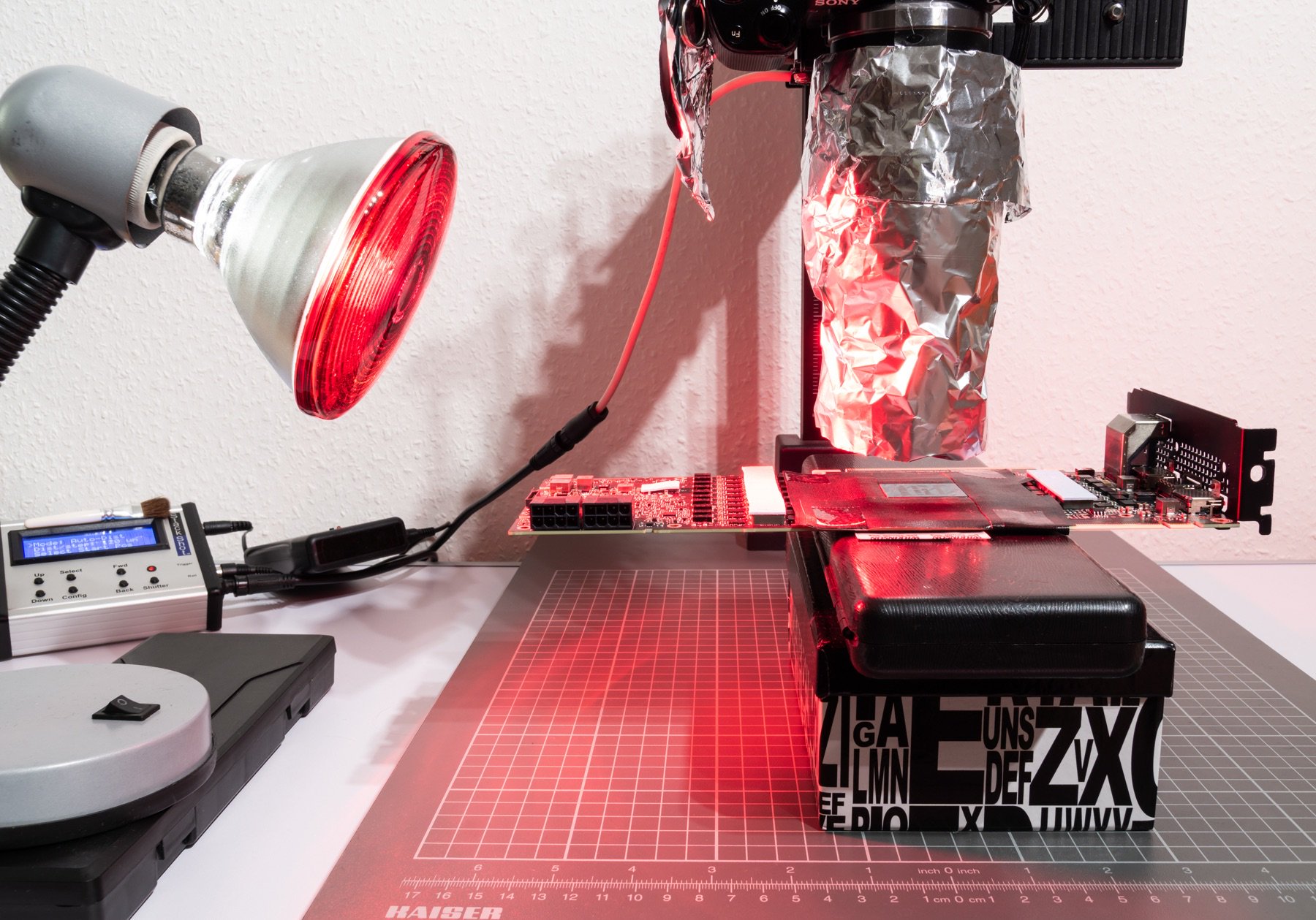
The chips he obtains to do this with are engineering samples or broken chips, so don’t be alarmed with the thought that he ripped the heatspreader off a working 64-core CPU.
Let’s Dive in a Little Deeper
The IOD on the Rome (AMD EPYC) CPU is significantly bigger than that on Matisse (AMD Ryzen) CPUs, which comes as no surprise as it has to deal with many more CPU cores. @Locuza on twitter analyzed the images, and identified all the individual components in the silicon, as pictured in the two images below. The EPYC IOD has a transistor count of 8.34 Billion transistors, and measures 416 mm2.

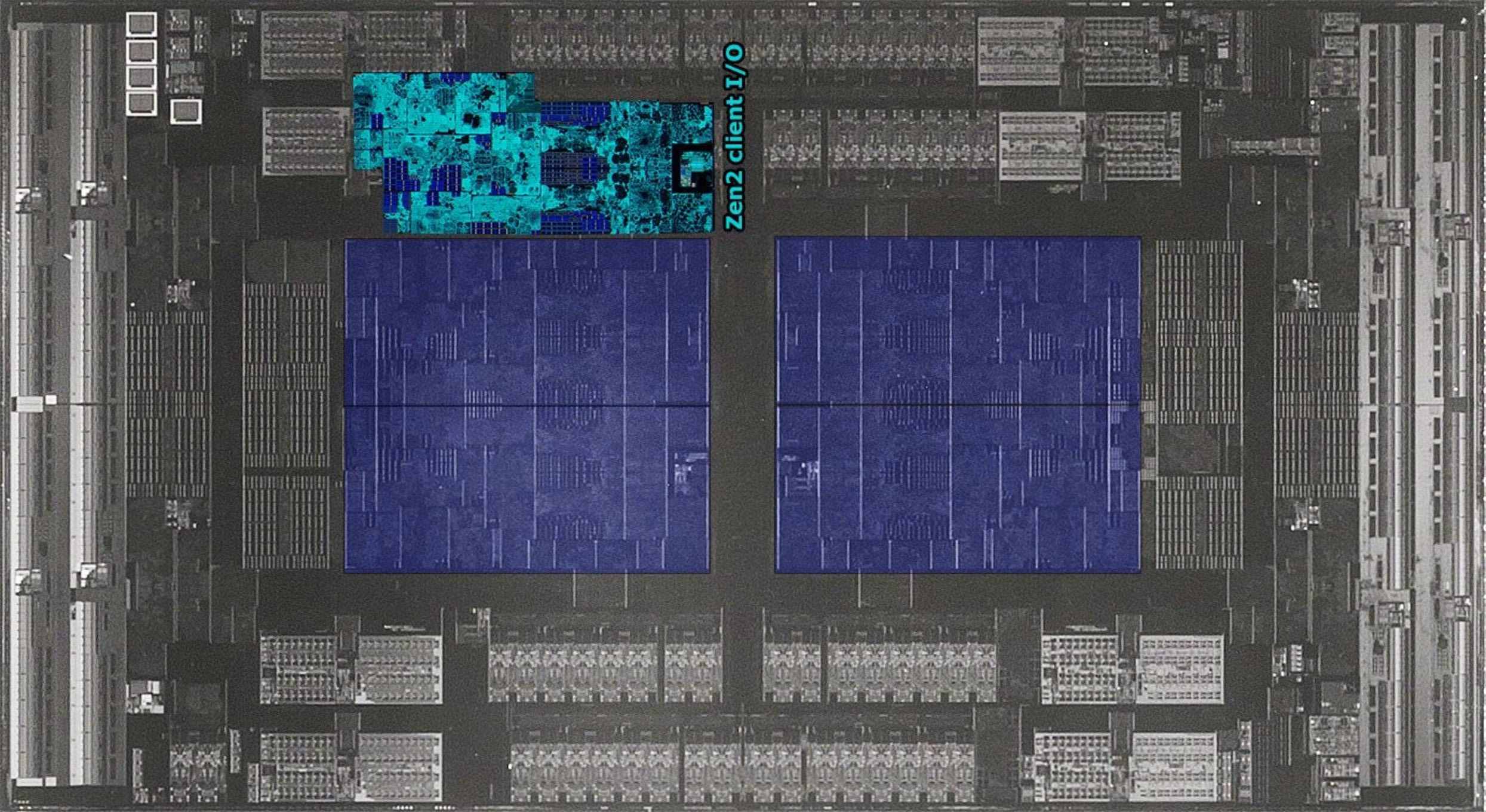
The IOD is essentially the heart of the CPU that brings all the devices together. As such, you can spot above the hardware for the PCI-Express lanes themselves, the DDR4 memory interface, and the Global Memory Interconnect.
Get Tom's Hardware's best news and in-depth reviews, straight to your inbox.
The CCD’s themselves weren’t pictured in detail on this CPU, but they are identical to the CCD’s found on the consumer line of Ryzen 3000 CPUs. OC_Burner pictured these earlier, so let’s have a look at those too.
Ryzen 5 3600 Also Pictured
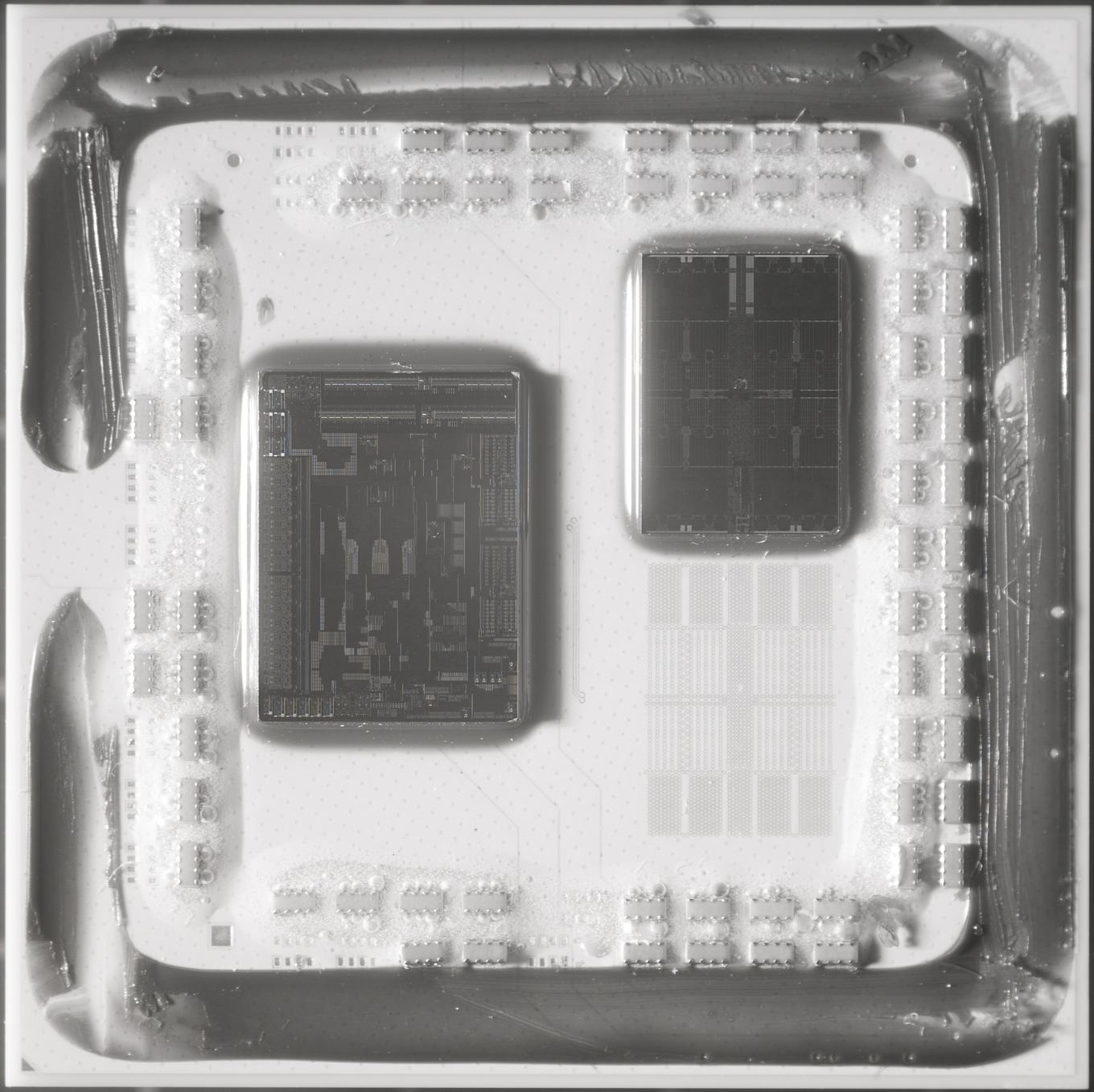
On the left of the chip you can see the IOD, which as you can see is notably smaller than that on the 64-Core Rome chip. If you compare the two IOD’s carefully, you can probably discern which parts of it match the components from the IOD above. The Ryzen IOD has 2.09 billion transistors, and measures about 125 mm² -- this makes it about a quarter the size of the IOD featured in the EPYC chip.
| Row 0 - Cell 0 | Transistor Count | Die Size |
| CCD | 3.9 billion | 74 mm² |
| IOD (Epyc) | 8.34 billion | 416 mm² |
| IOD (Ryzen) | 2.09 billion | 125 mm² |
| Total Epyc | 39.54 billion | 1.008 mm² |
| Total Ryzen 5 | 5.99 billion | 199 mm² |
| Total Ryzen 9 | 9.89 billion | 273 mm² |
The CCD is on the right, and in this picture, it does have the opaque (to infrared light) layer shaved off of it, unlike the CCD’s in the first image. The CCD's in the two chips are identical, except of course that on the Ryzen 5 chip two of the cores are disabled, and of course that the EPYC chip carries not one, but eight CCDs. Each CCD has 3.9 billion transistors and measures 74 mm²
If you were to have a Ryzen 9 3900X chip and opened it up, you would spot not one, but two CCD's. You can also see on the Ryzen 5 die shot above where the second CCD would have been located.
Having a closer look at these, you can see on the CCD below that there are 8 cores in the middle, with the L2 and L3 cache above and below the cores.
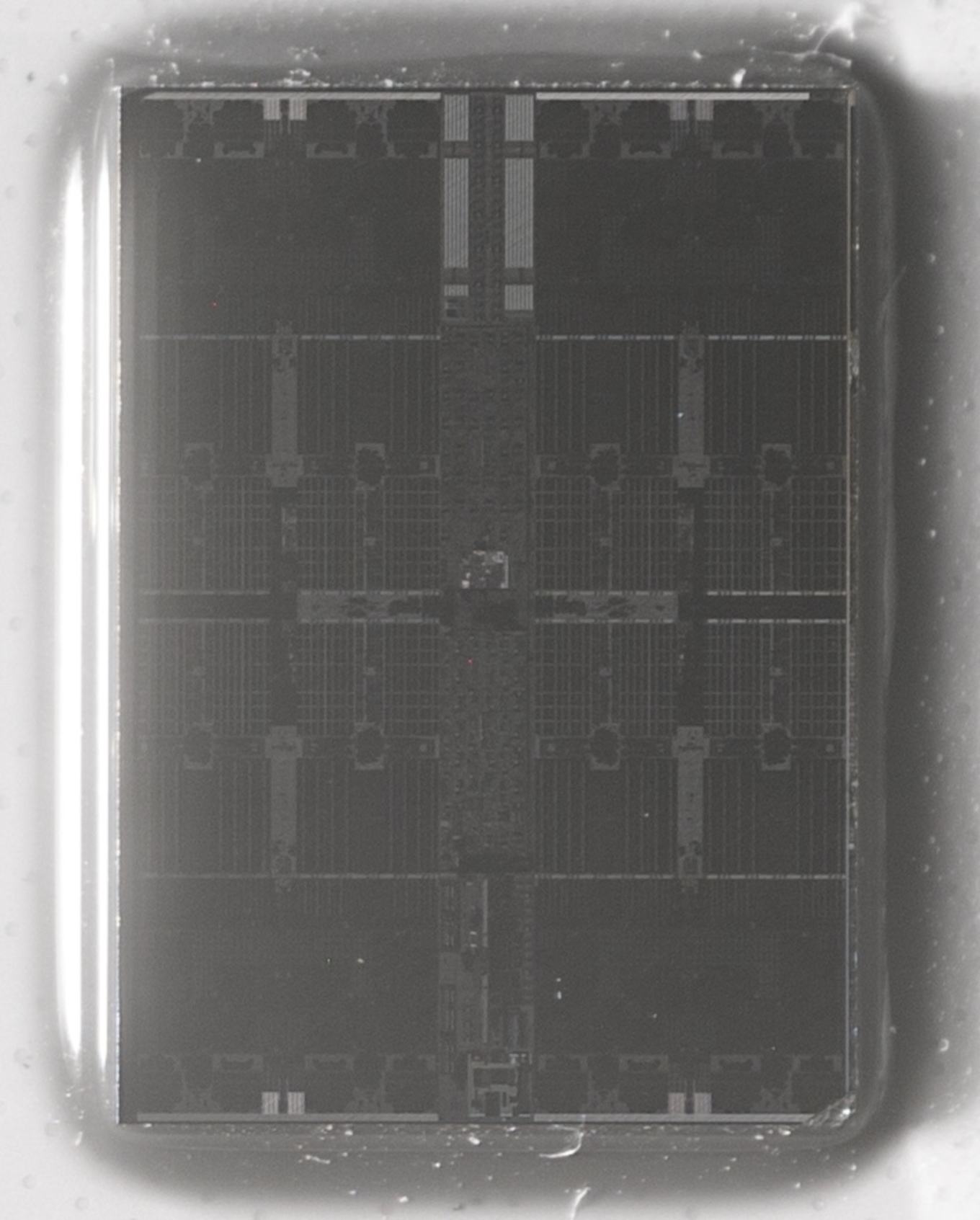
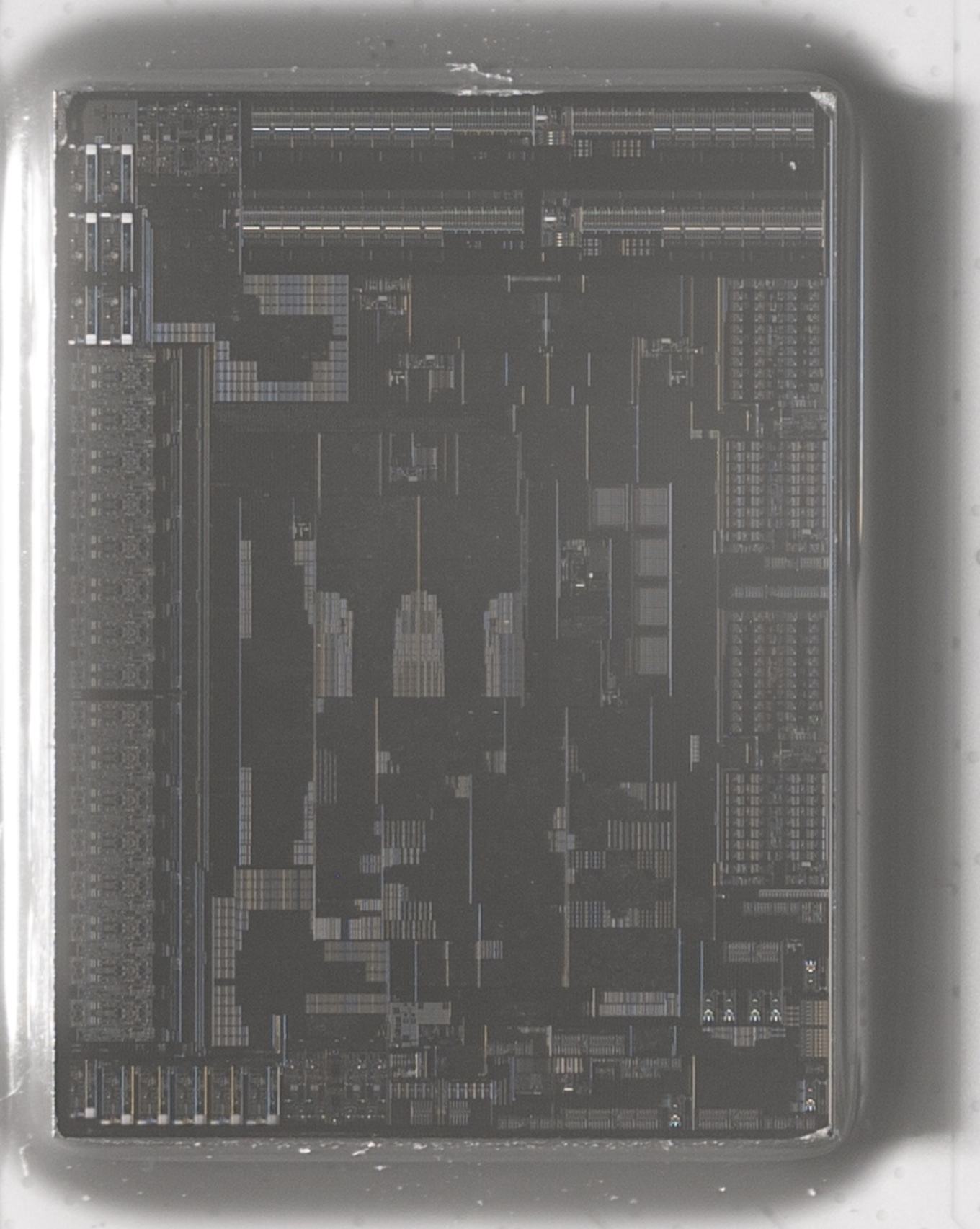
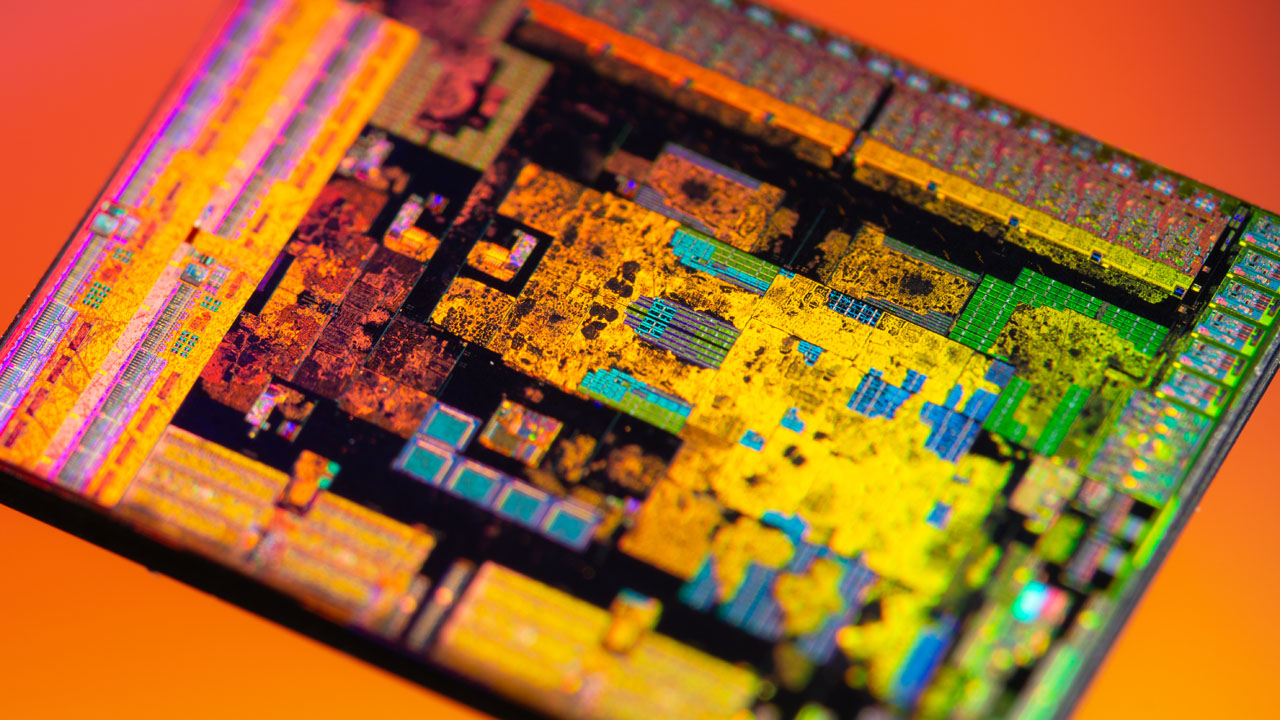

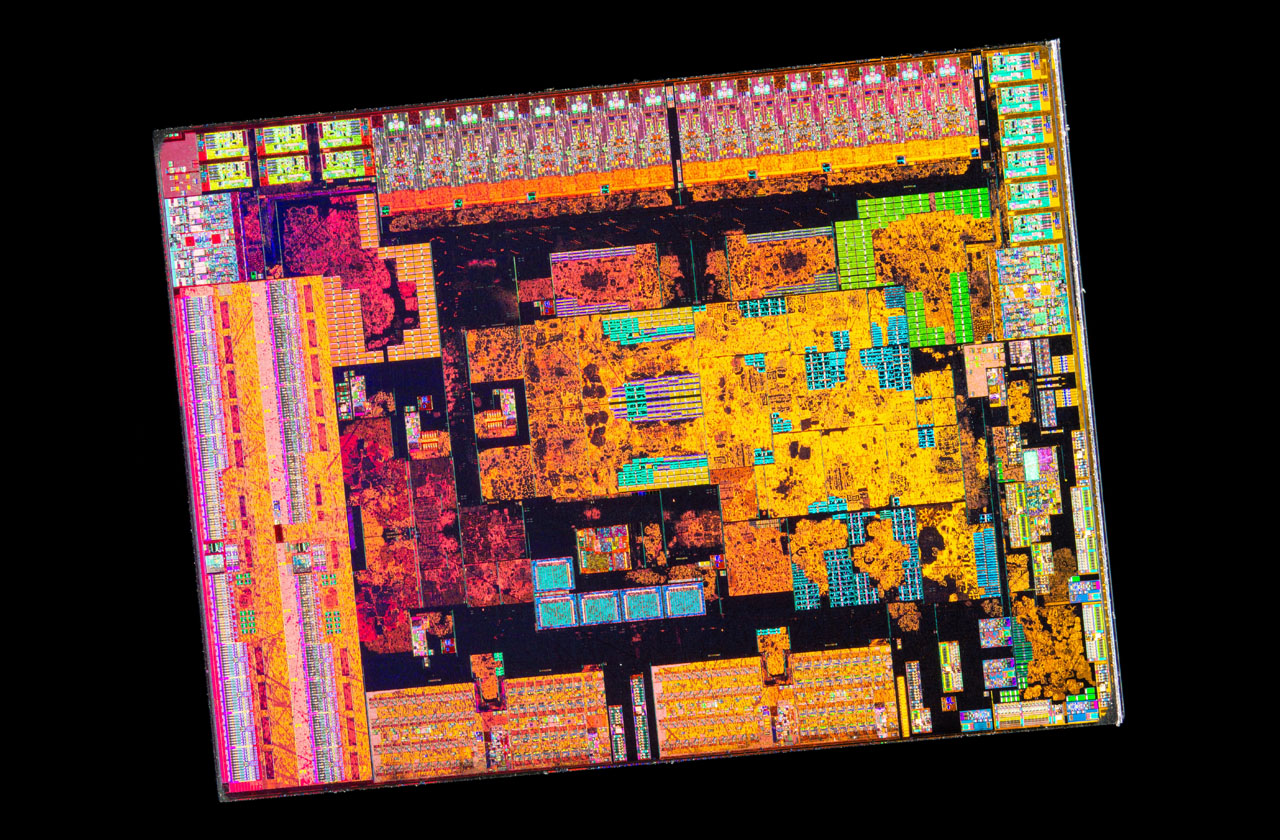
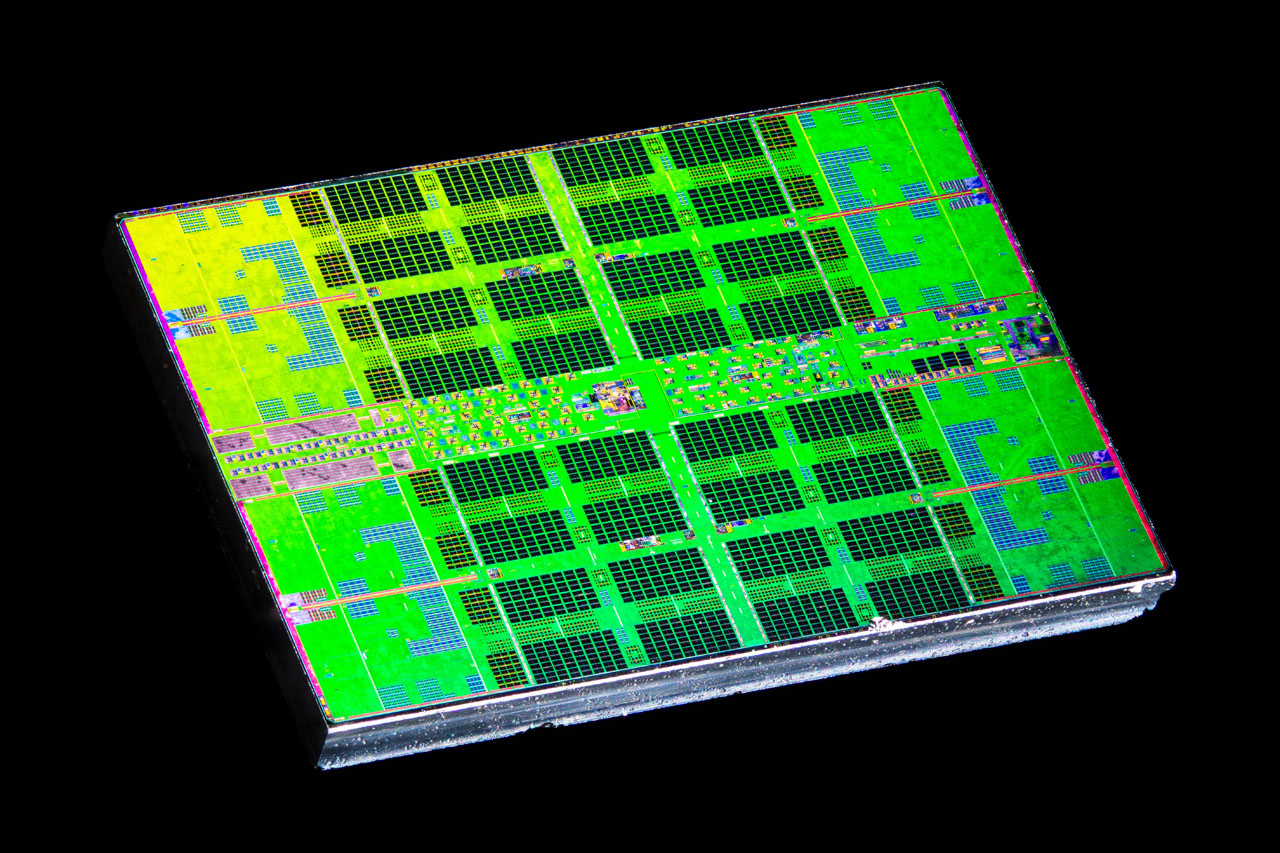

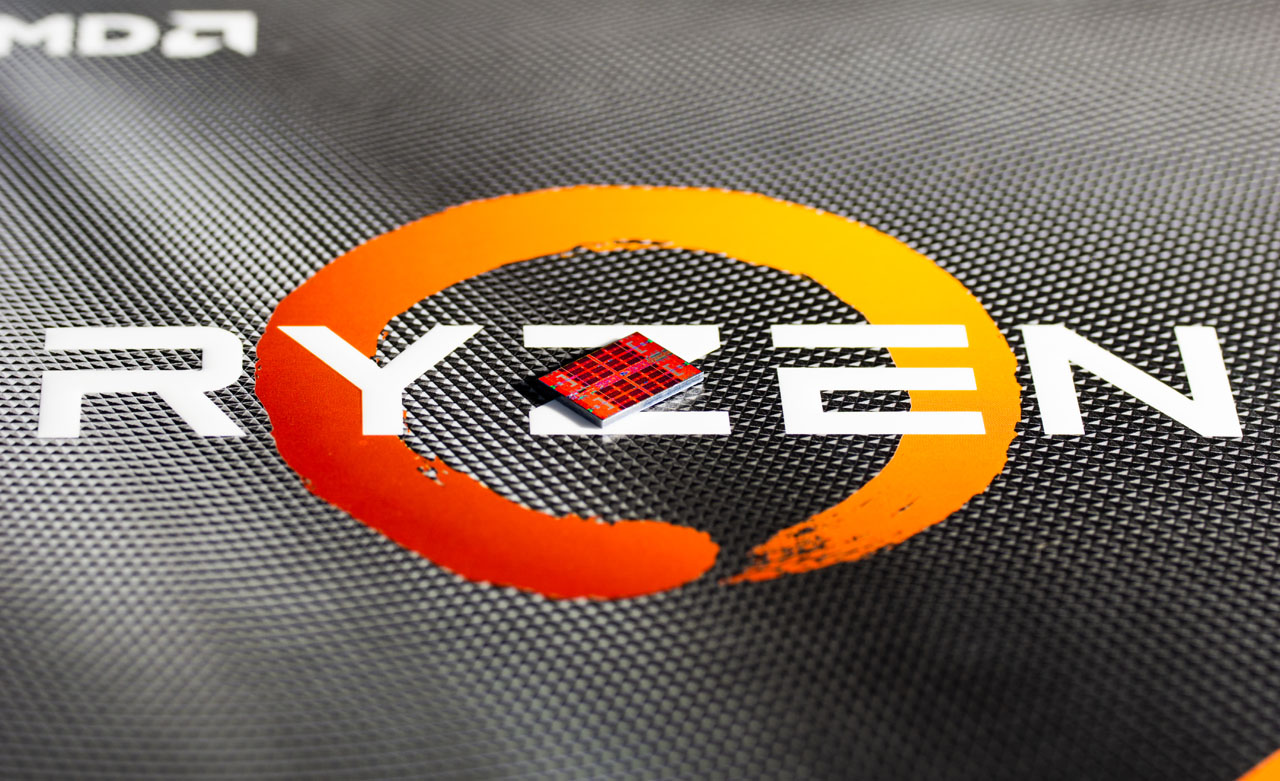

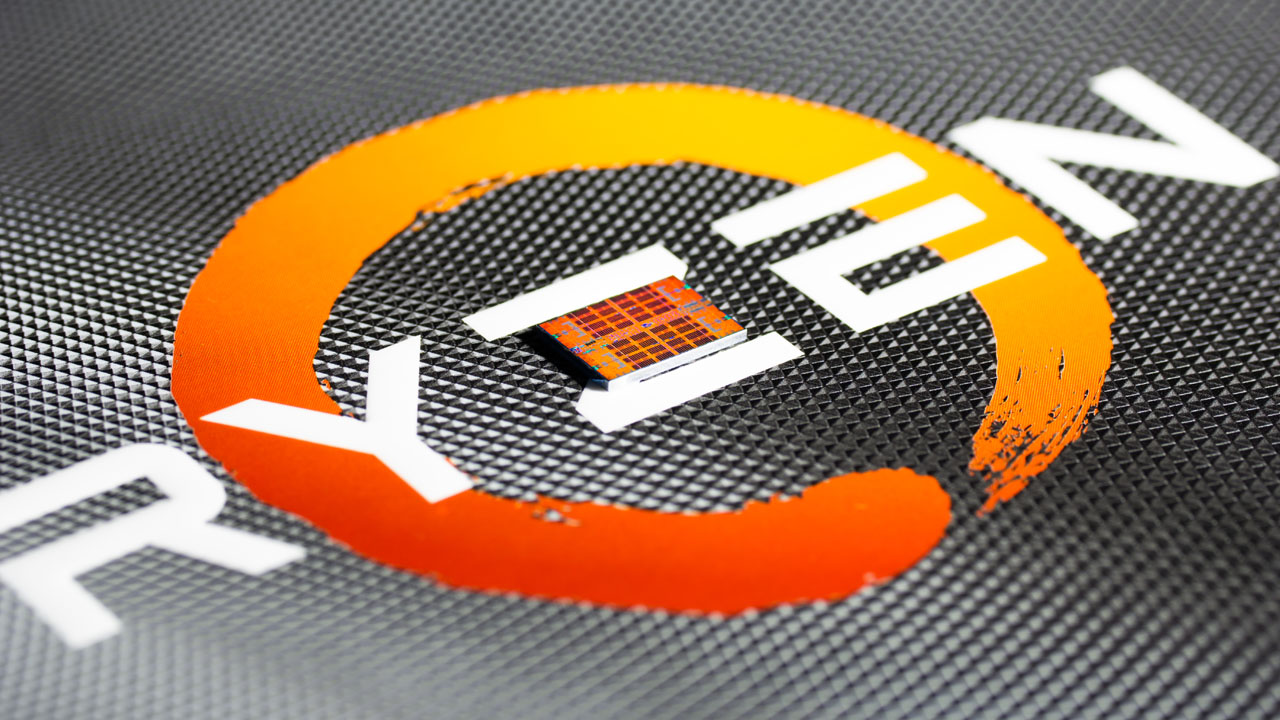

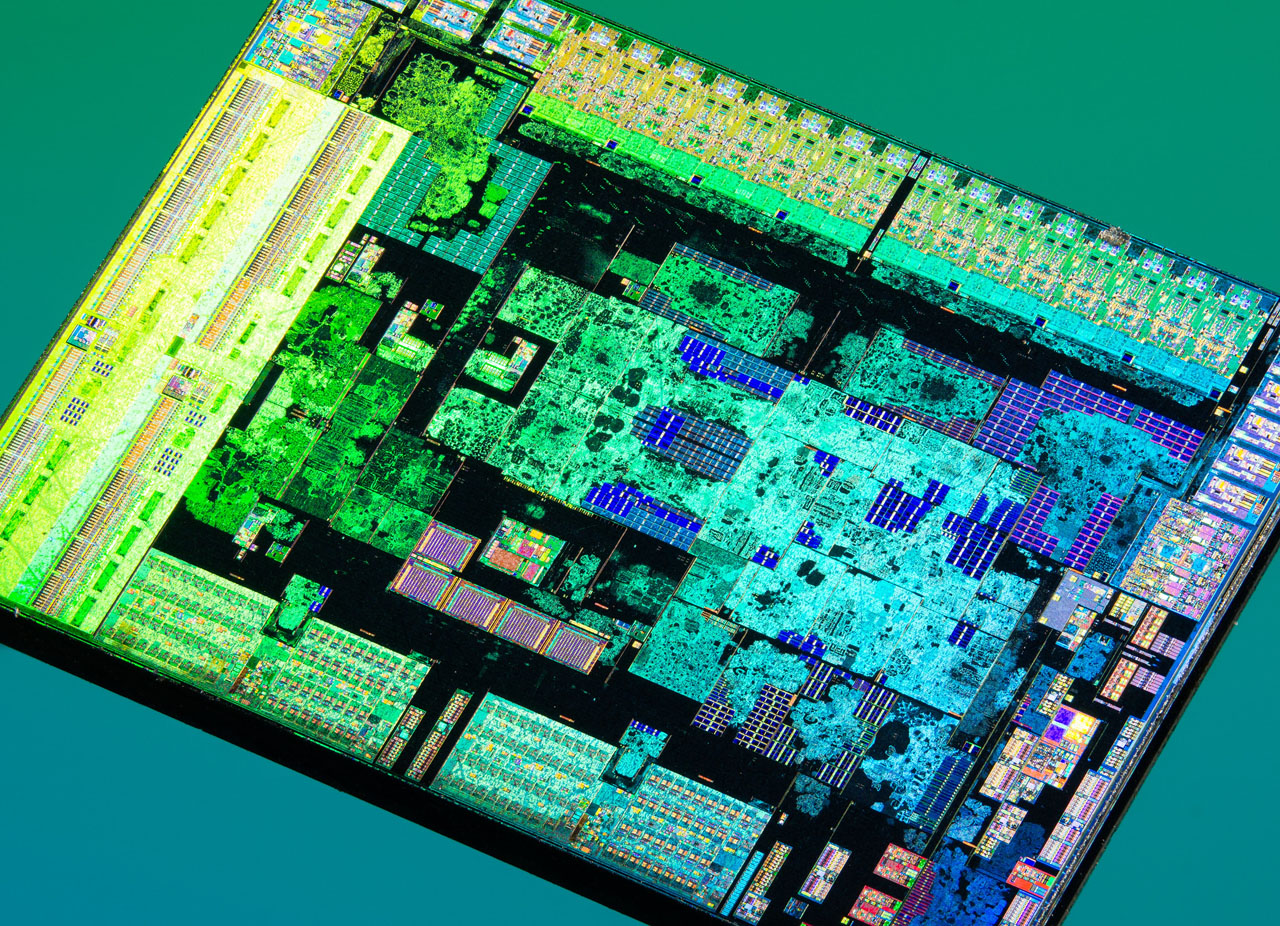
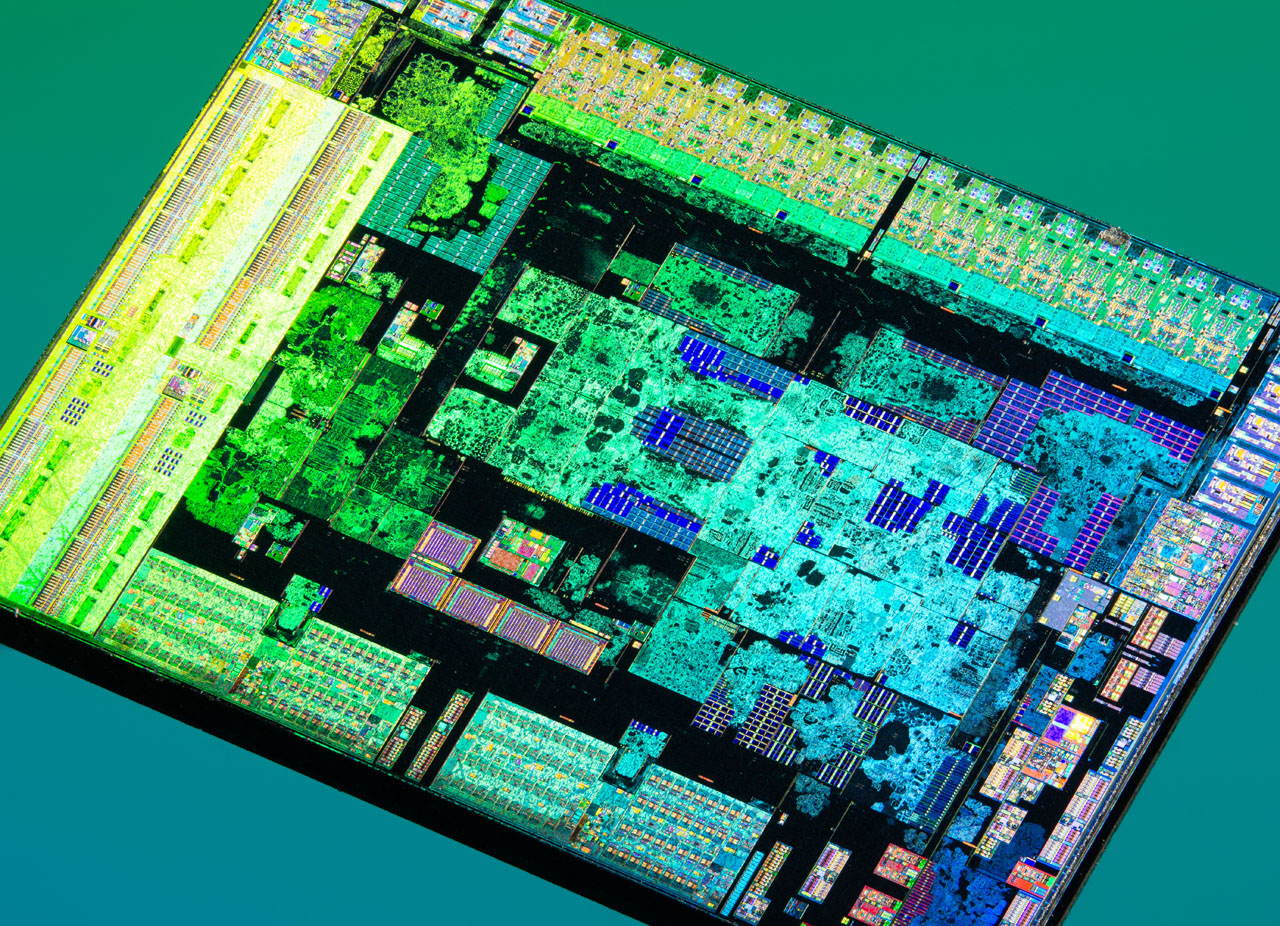
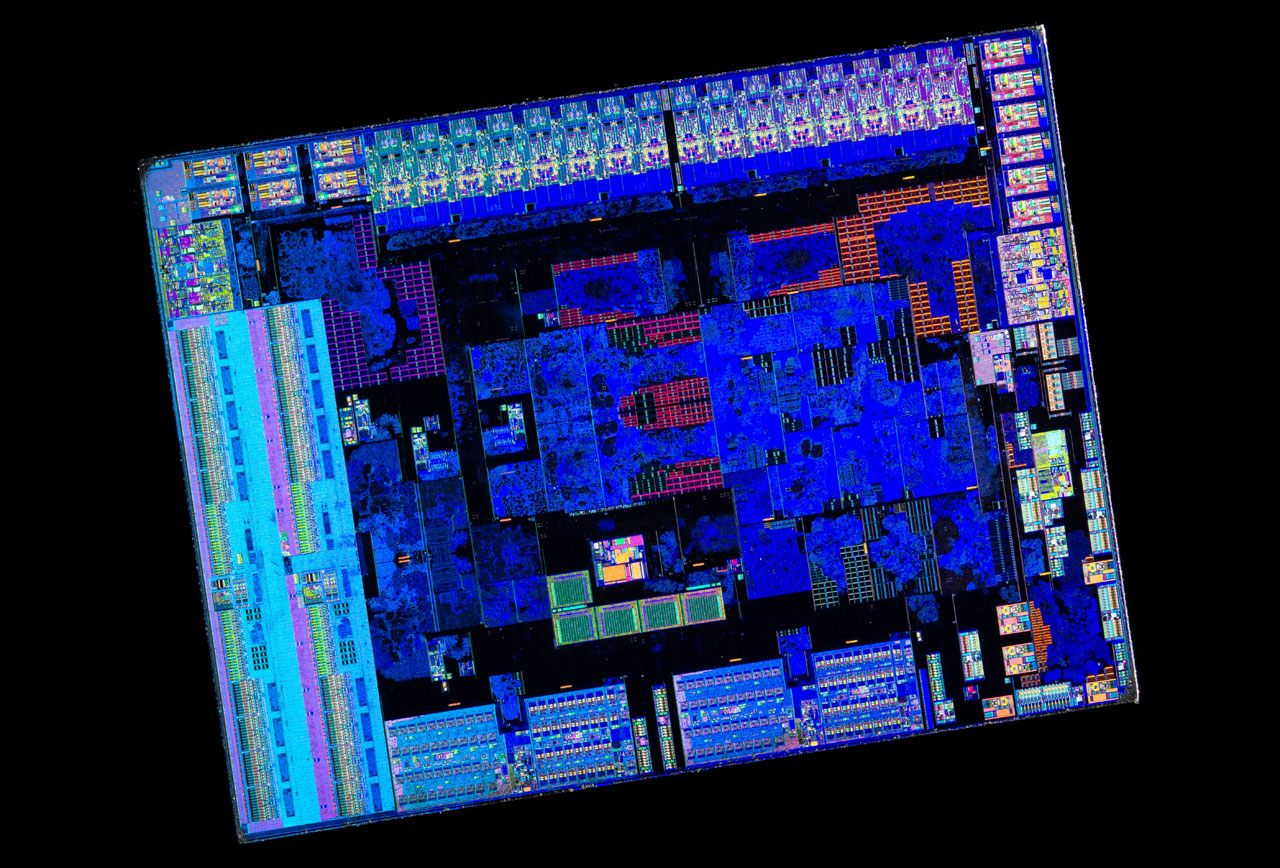
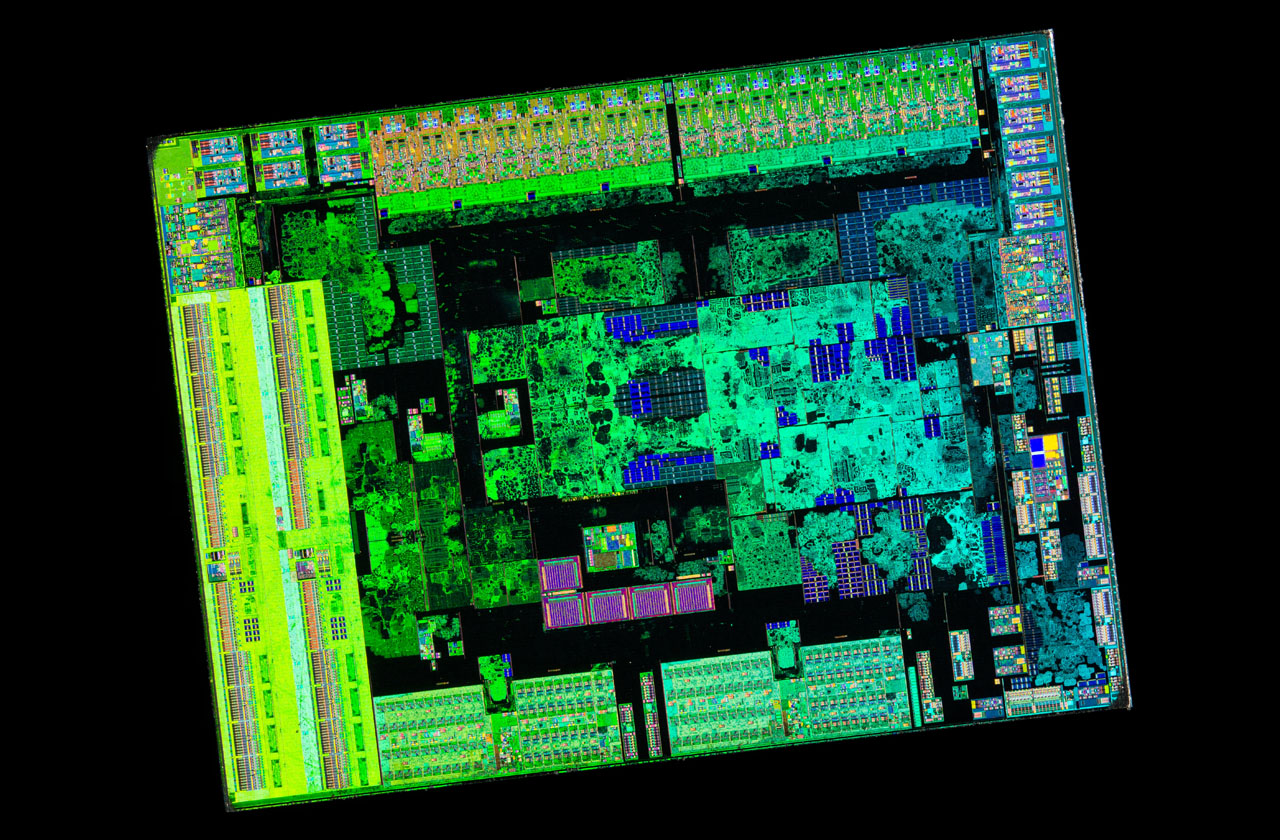
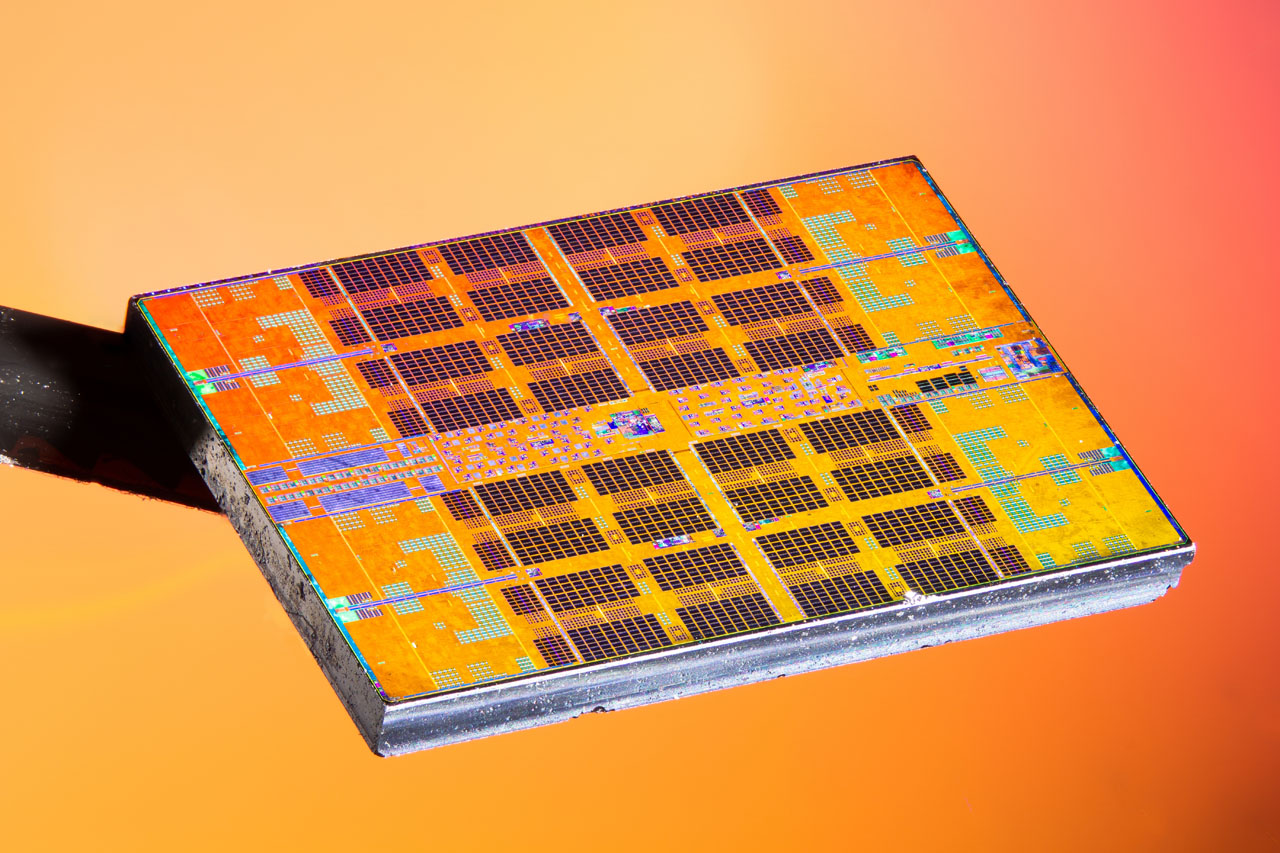
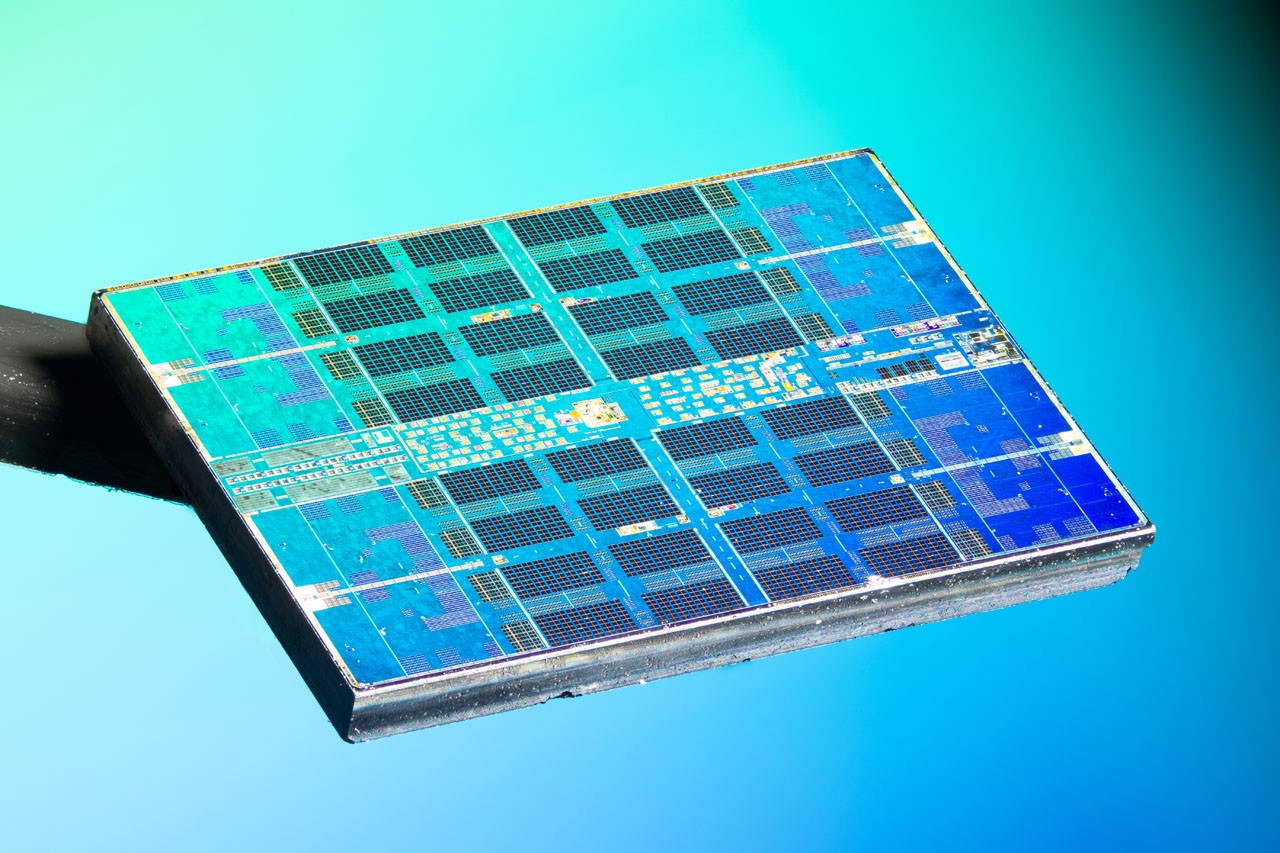
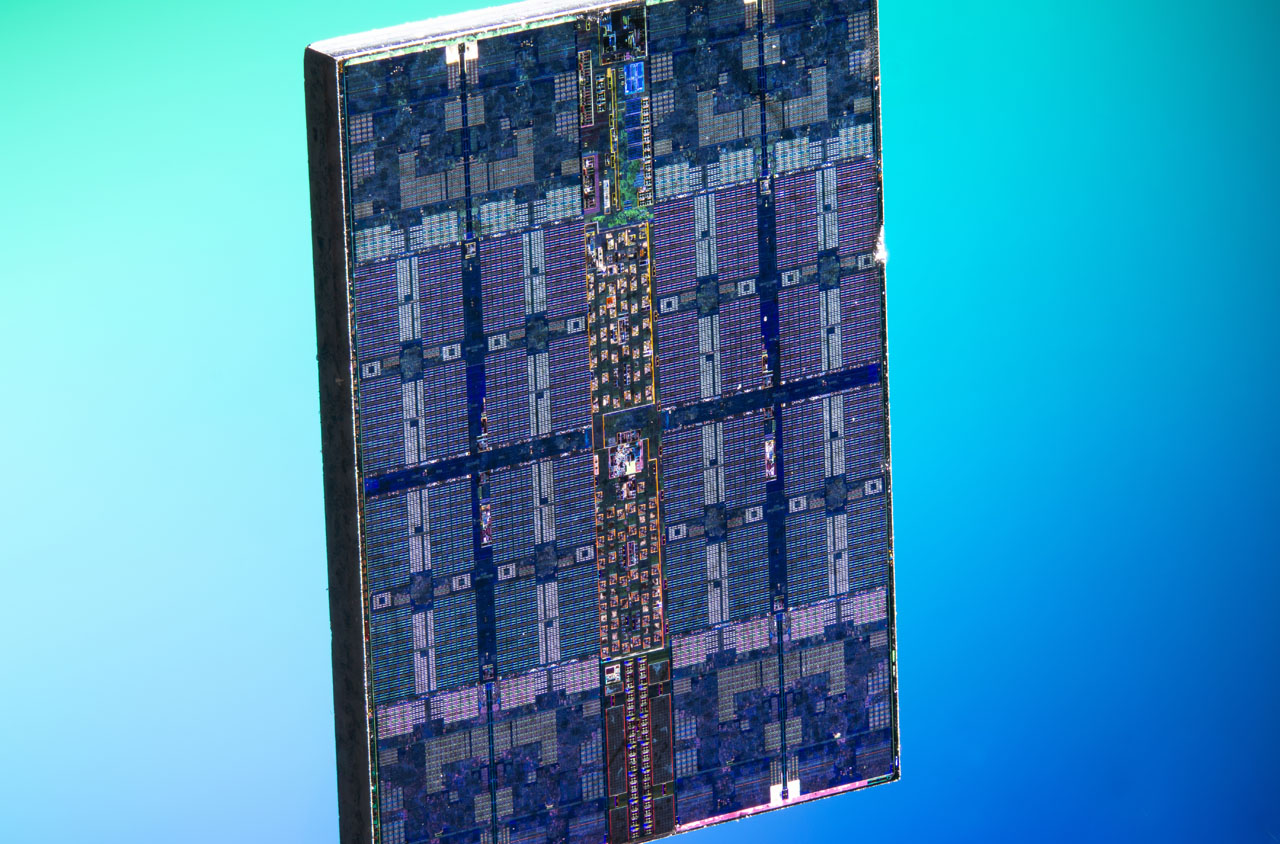
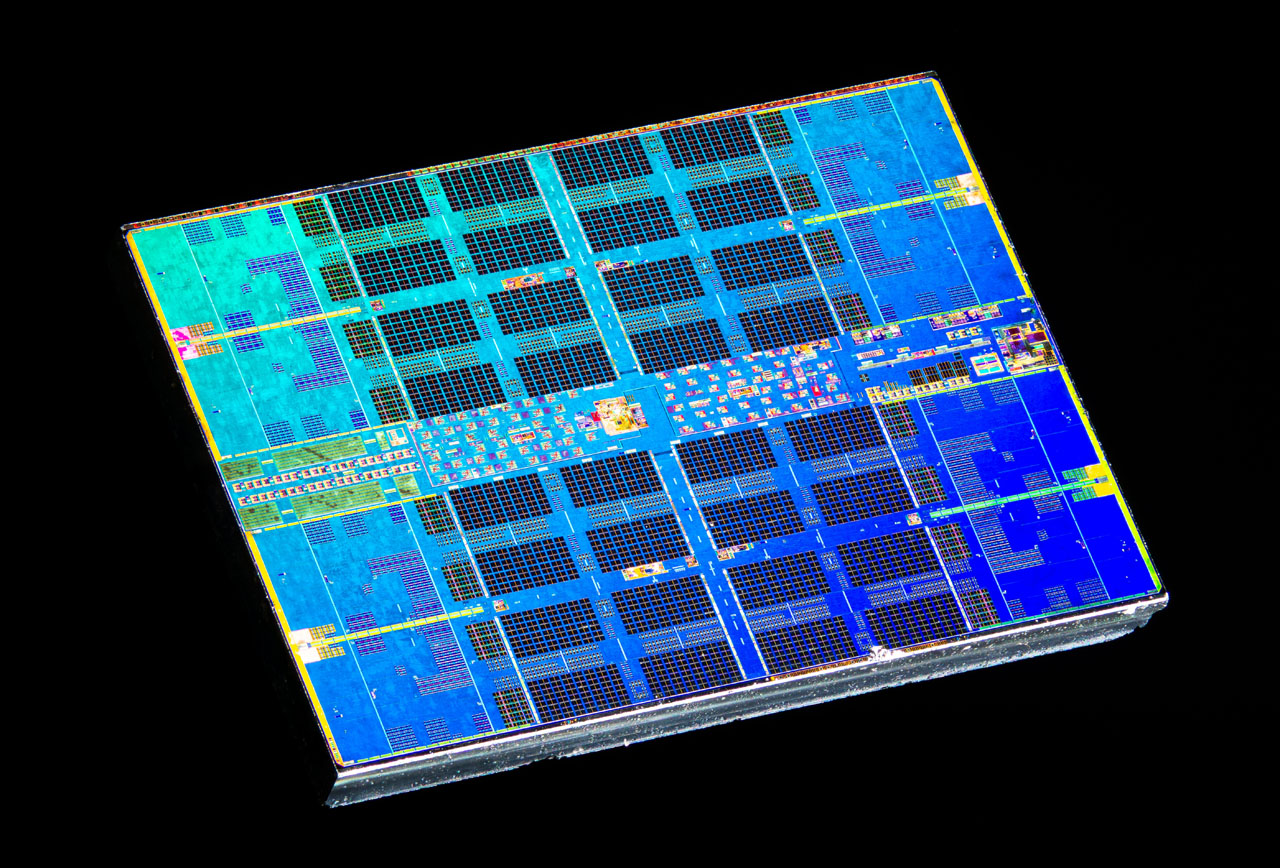
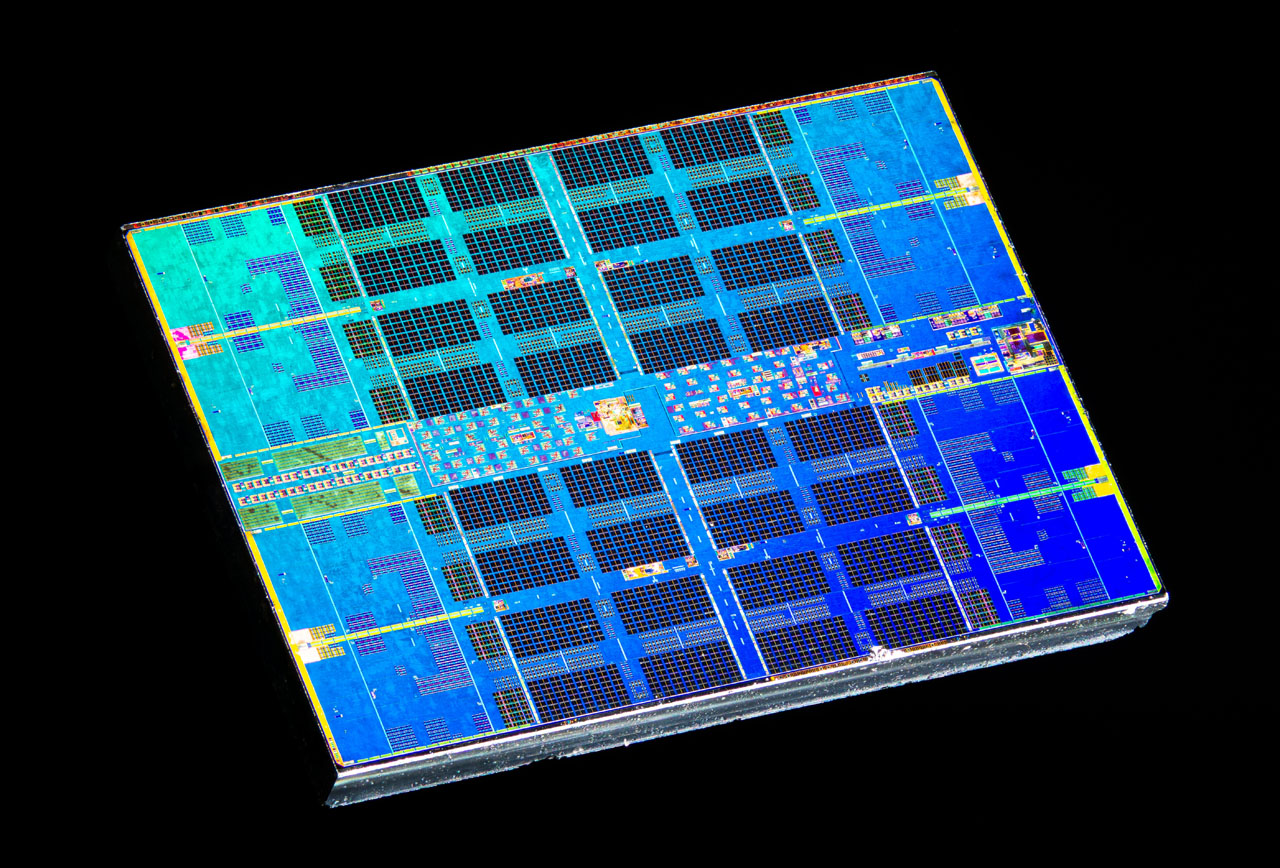
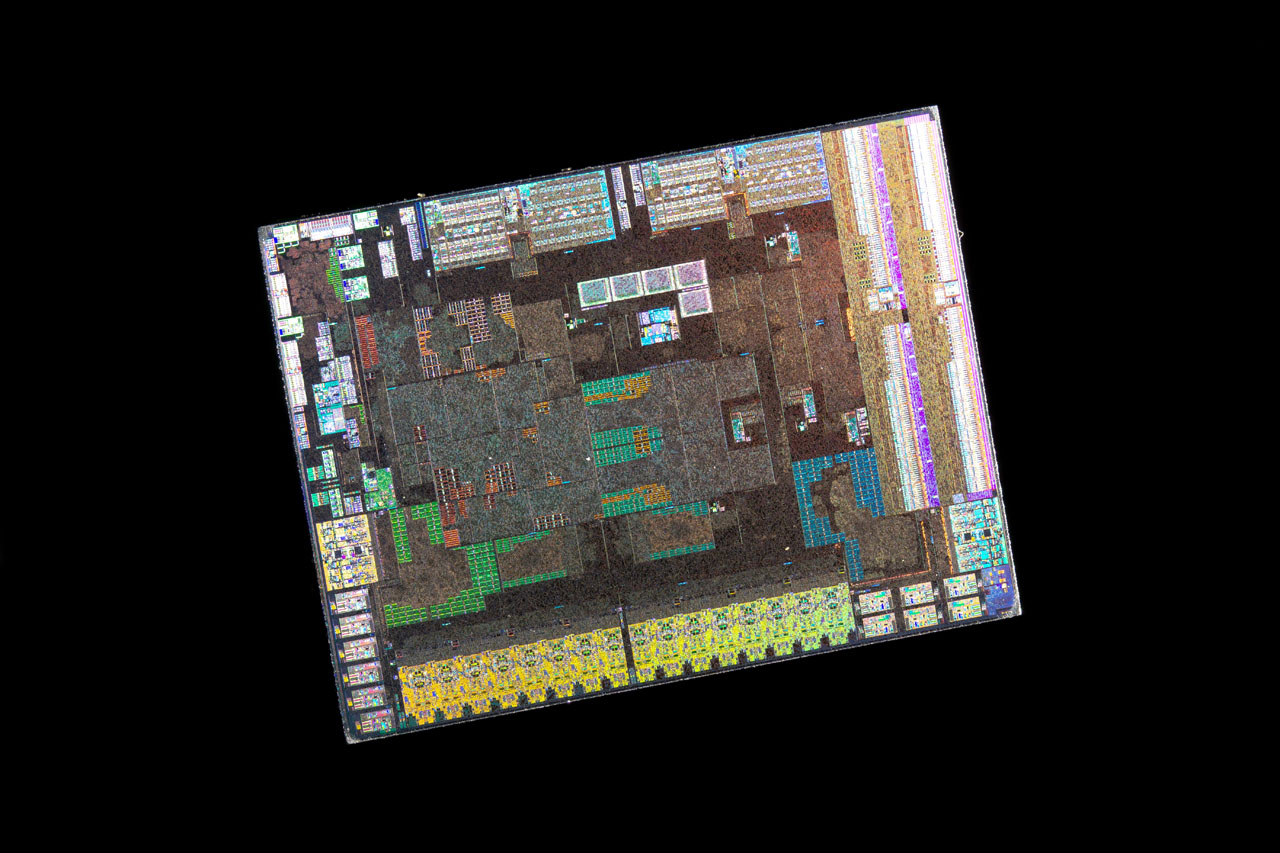
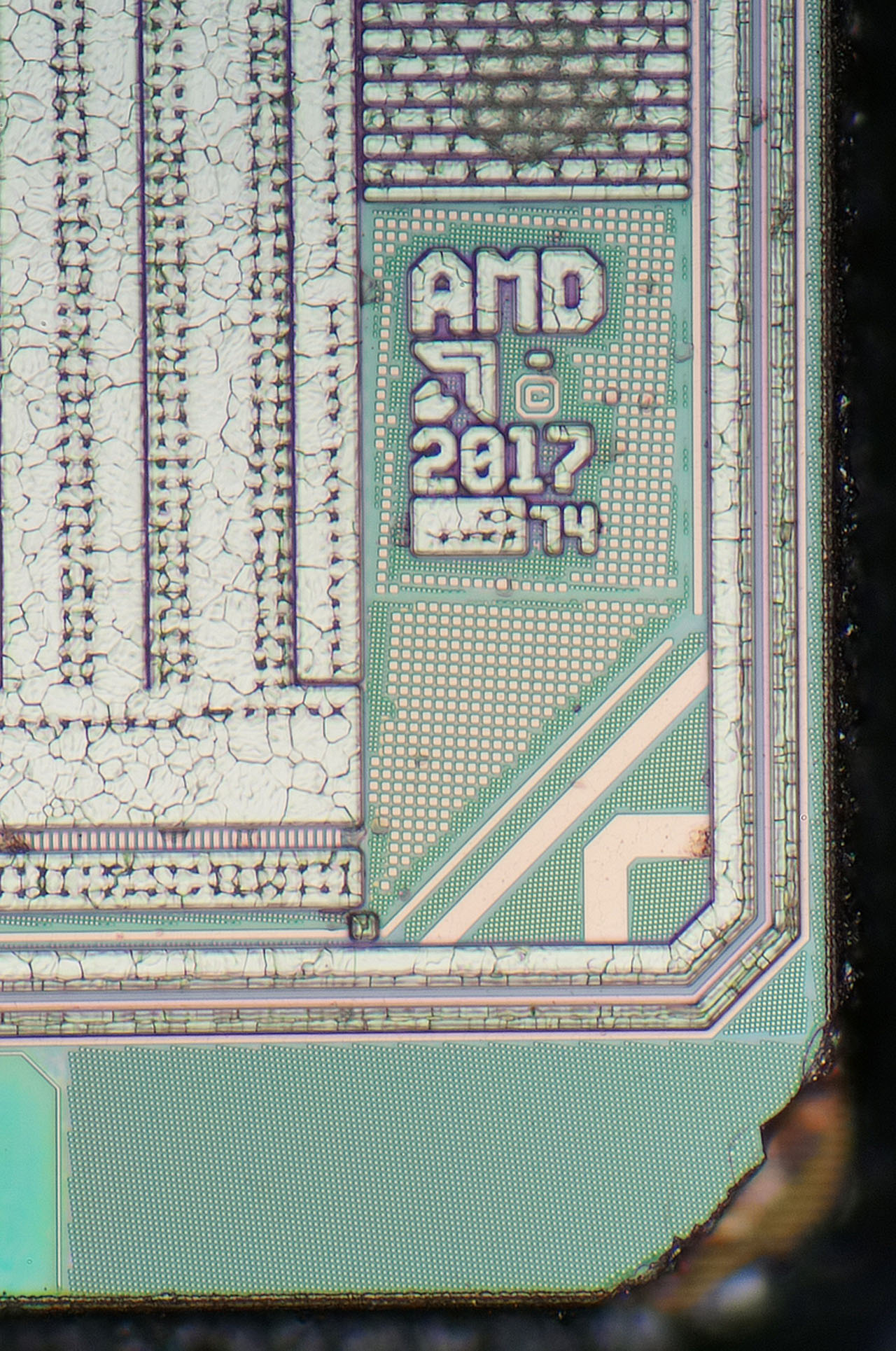
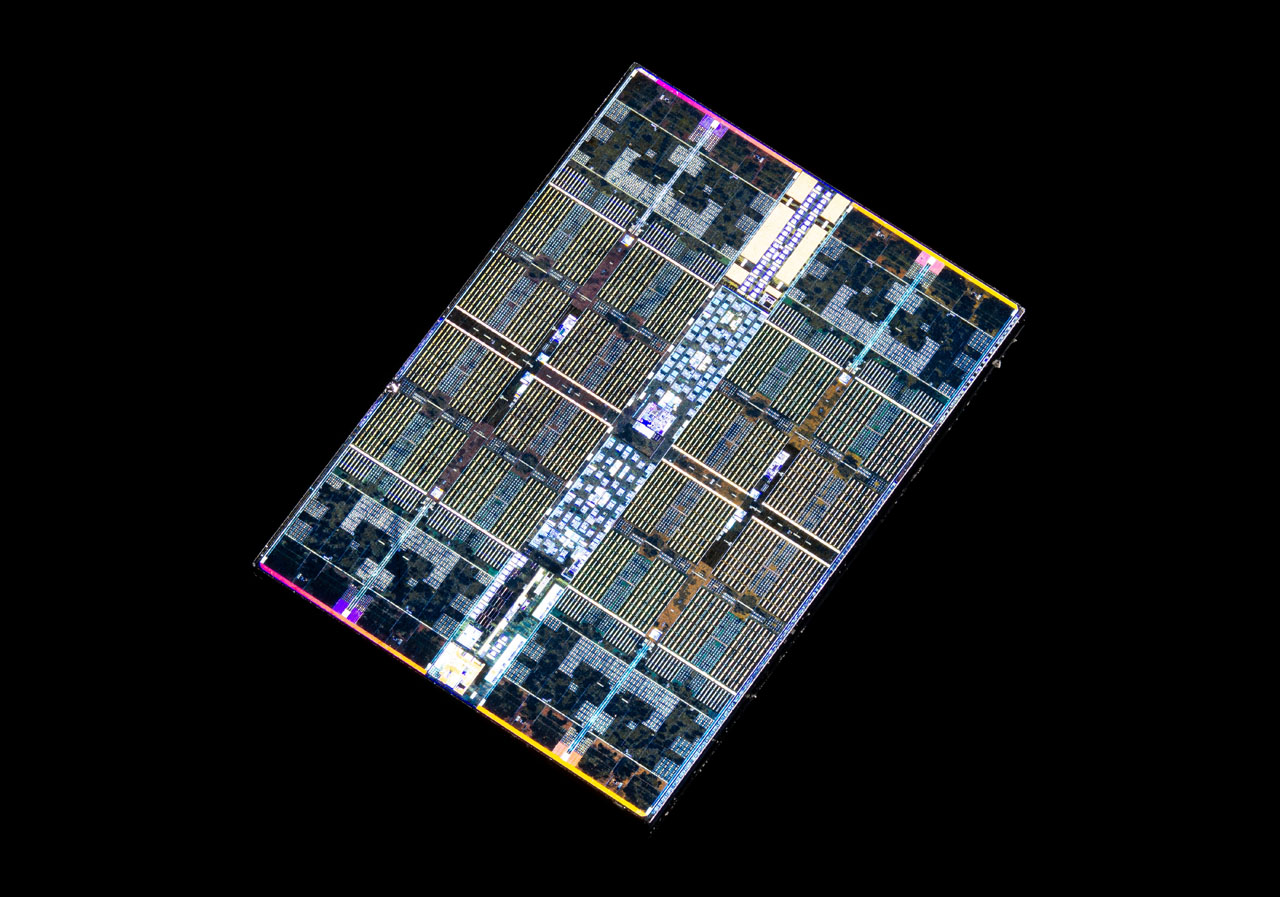
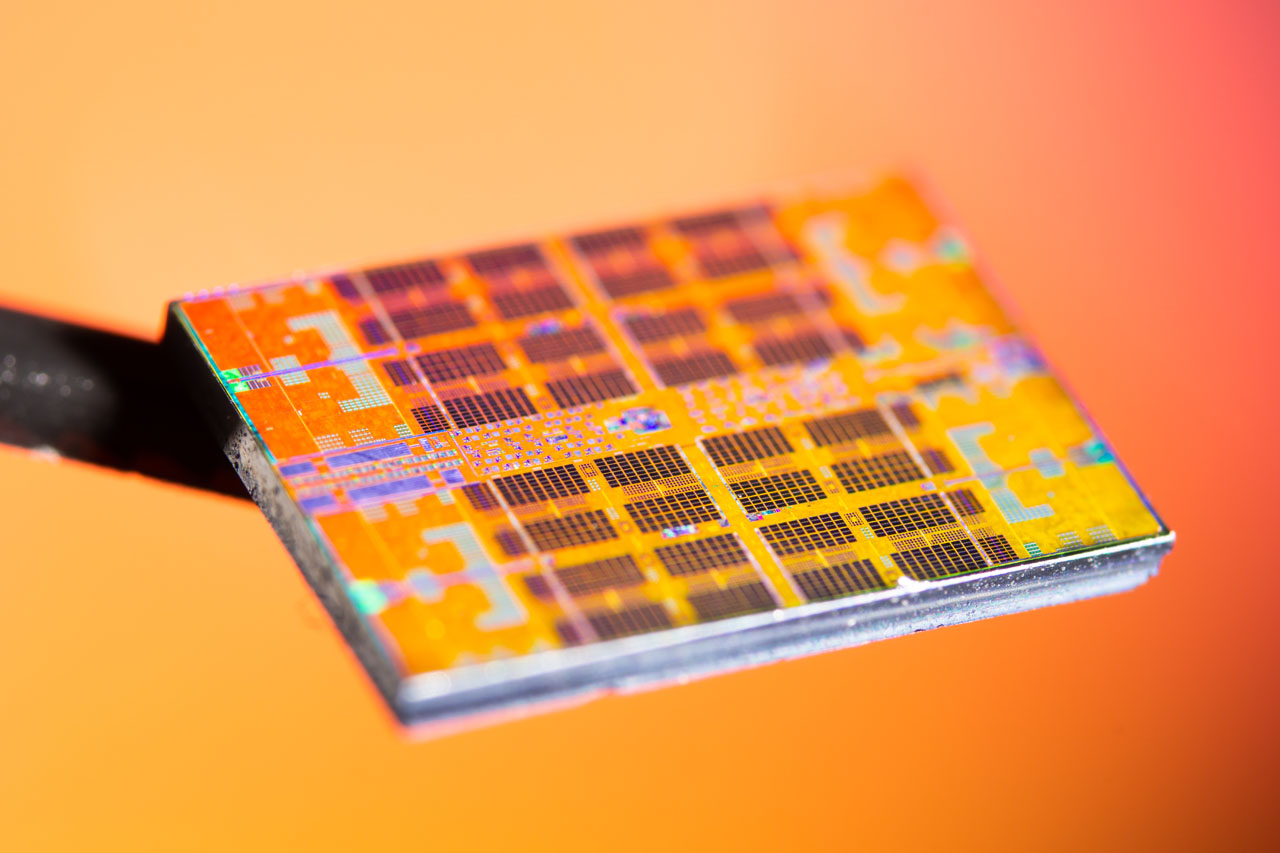


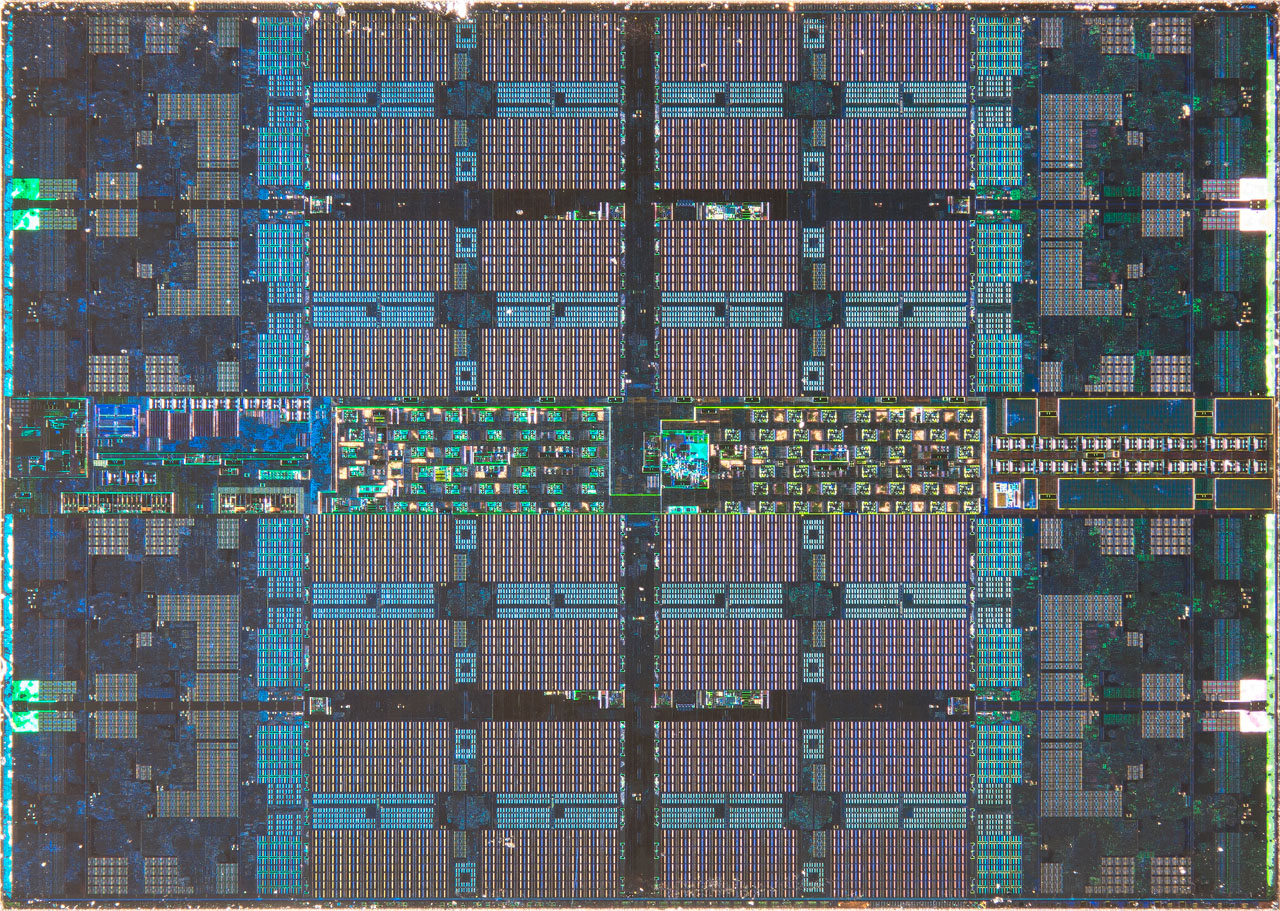

Here you can see colorized versions of the Ryzen 3000 series processors.
There you have it. If you add up the transistor count of the eight CCD's in the EPYC chip along with the IOD, you end up with a total count of 39.54 billion transistors and a silicon surface area of 1008 mm² -- and if this doesn't make you appreciate the engineering marvel that goes into these chips, we don't know what will.
Niels Broekhuijsen is a Contributing Writer for Tom's Hardware US. He reviews cases, water cooling and pc builds.
-
TokyoQuaSar I don't understand why every site except Cowcotland says 3.9B transistors/CCD although the slide from the AMD presentation at Hot Chips 2019 mentionned in many of those articles says 3.8B transistors. It looks as if the original news from harwareluxx got it wrong and said 3.9B and everyone copied the error. Or it's the AMD slide that is wrong ?Reply
